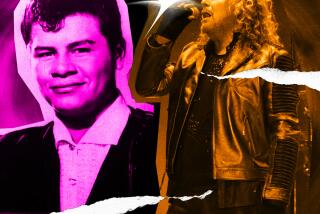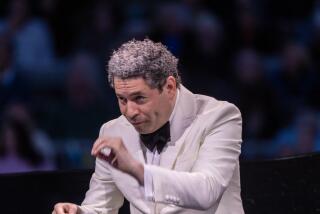DANCE REVIEW : ‘Espana Clasica’ Surveys Styles
- Share via
Directed and choreographed by Roberto Amaral, “Espana Clasica” did not attempt to be an extensive history of Spanish concert dance forms. Still, when his company lined up in the final “Rapsodia Espanola” Sunday afternoon at the Fountain Theatre in Hollywood, the dancers did recapitulate the varied movement styles they had danced earlier.
These reached back to the soft-slippered, balletic “escuela bolera” of the 18th and 19th Centuries, and forward to some overheated modern dance forms. But many works on the 14-part program also reflected flamenco influences, a tradition in which Amaral has distinguished himself.
Typifying the earliest style, as well as providing a high point in the concert, Maria Baptista danced a modest but joyful solo, characterized by clean beats, little hops, springy jumps and lots of ballet positions.
At the other extreme, showing a kind of modernism to its greatest disadvantage, was “Escena Romantica” (music by Granados), with Maruja Belmonte and Carola Marquez cast as chic black-and-white mirror images.
Shortly, however, the abstract parallelism gave way to imitative sequences; then the dancers broke the imaginary line dividing them, finally to suggest some kind of character situation as they exited in opposite directions, looking mournfully at each other. Odd.
Guest dancer Linda Vega danced her own choreographed, overwrought solo--or rather, duet with an empty chair--to varying moods she found expressed in Pablo Luna’s “Benamor.”
Besides Amaral, who danced intense solos and duets with Vega, other capable dancers included Irene Heredia and Antonia Lopez.
More to Read
The biggest entertainment stories
Get our big stories about Hollywood, film, television, music, arts, culture and more right in your inbox as soon as they publish.
You may occasionally receive promotional content from the Los Angeles Times.










